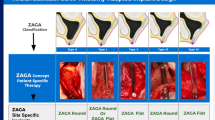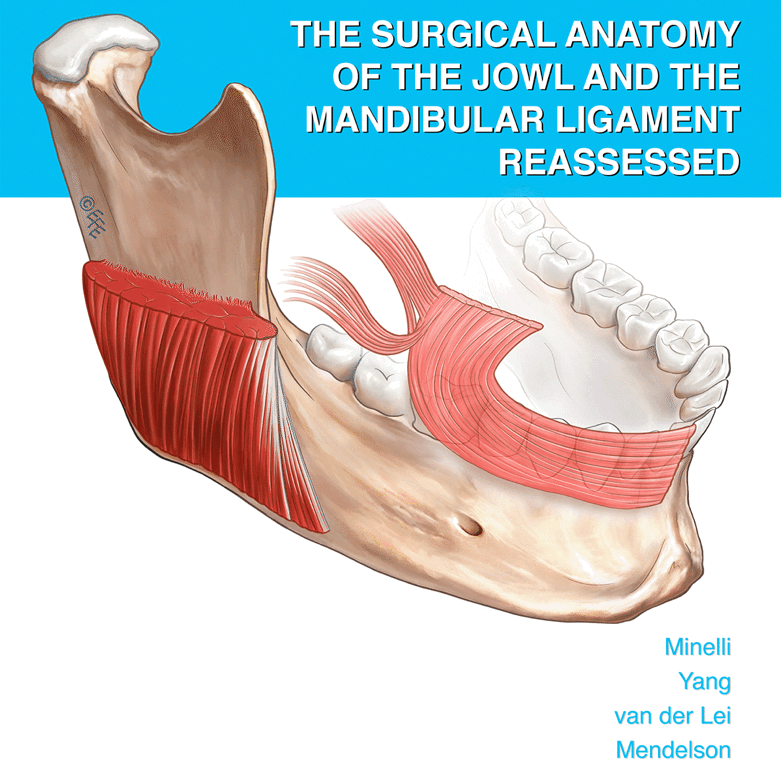Abstract
Background
A variety of free flaps have been successfully used for mandible reconstruction. The iliac crest has similar dimensions and form to the lateral mandible. The success rate and complication rate of deep circumflex iliac artery flap transplants had no significant difference to those of other microvascular bone transplants.
Aims
The purpose of this study was to evaluate our experience with the use of the vascularized free iliac flap for the reconstruction of mandibular defects following surgical resection.
Methods
Data from 33 patients who underwent operations, including segmental mandibulectomy, immediate mandibular reconstruction and second-stage surgery, were retrospectively analysed. The size of segmental mandible defects ranged from 6 to 13 cm. Surgicase for cranio-maxillofacial reconstruction software was used for patients with mandible defects greater than 10 cm.
Results
One flap loss occurred related to vascular thrombosis. The survival rate was 96.97 %, and the mean follow-up was 26 months. A total of 81 osseointegrated dental implants were placed in 25 patients with adequate outcomes; 21 patients (63.64 %) showed complete recovery, and in 18 out of these 21 patients, occlusion rehabilitation with fixed dentures benefitted from an appropriate distance between upper teeth and new alveolar bone. Donor-site morbidity was moderate, and most of the patients were satisfied with their functional and aesthetic results.
Conclusions
Our results show that deep circumflex iliac artery is a reliable method for reconstructing hemimandibular body defects with an acceptably low rate of morbidity. The iliac crest is a safe foundation for the placement of osseointegrated implants, which enable good reconstruction and further improve life quality of patients.




Similar content being viewed by others
References
Hidalgo DA, Pusic AL (2002) Free flap mandibular reconstructions: a 10-year follow-up study. Plast Reconstr Surg 110:438–449
Taylor GI (1982) Reconstruction of the mandible with free composite iliac bone grafts. Ann Plast Surg 9(5):361–376
Toet L, Bosse JP, Moufarrege R et al (1981) The scapula crest pedicled bone graft. Int J Microsurg 3:257–261
Bianchi B, Ferri A, Ferrari S et al (2009) Superficial inferior epigastric artery adiposal flap for facial contour reconstruction: report of cases. J Craniomaxillofac Surg 37:249–252
van Gemert JT, van Es RJ, Rosenberg AJ et al (2012) Free vascularized flaps for reconstruction of the mandible: complications, success, and dental rehabilitation. J Oral Maxillofac Surg 70(7):1692–1698
Chiapasco M, Biglioli F, Autelitano L et al (2006) Clinical outcome of dental implants placed in fibulafree flaps used for the reconstruction of maxillo-mandibular defects following ablation for tumors or osteoradionecrosis. Clin Oral Implants Res 17:220–228
Takushima A, Harii K, Asato H et al (2001) Mandibular reconstruction using microvascular free flaps: a statistical analysis of 178 cases. Plast Reconstr Surg 108(6):1555–1563
Deleyiannis FW, Rogers C, Lee E et al (2006) Reconstruction of the lateral mandibulectomy defect: management based on prognosis and location and volume of soft tissue resection. Laryngoscope 116:2071–2080
Urken ML, Weinberg H, Vickery C et al (1991) The internal oblique-iliac crest free flap in composite defects of the oral cavity involving bone, skin, and mucosa. Laryngoscope 101(3):257–270
Iizuka T, Hafliger J, Seto I et al (2005) Oral rehabilitation after mandibular reconstruction using an osteocutaneous fibula free flap with endosseous implants. Factors influencing the outcome in patients with oral cancer. Clin Oral Implants Res 16:69–79
Gaggl AJ, Bürger H, Chiari FM (2011) A combined superficial inferior epigastric artery flap and vascularized iliac crest flap in the reconstruction of extended composite defects of the posterior mandible and adjacent soft tissue: first clinical results. Int J Oral Maxillofac Surg 40:162–168
Maranzano M, Freshi G, Atzei A et al (2005) Use of vascularized iliac crest with internal oblique muscle flap for mandible reconstruction. Microsurgery 25:299–304
Genden EM, Wallace D, Buchbinder D et al (2001) Iliac crest internal oblique osteomusculocutaneous free flap reconstruction of the postablative palatomaxillary defect. Arch Otolaryngol Head Neck Surg 127:854–861
Leiggener C, Messo E, Thor A et al (2009) A selective laser sintering guide for transferring a virtual plan to real time surgery in composite mandibular reconstruction with free fibula osseous flaps. Int J Oral Maxillofac Surg 38:187–192
Eckardt A, Swennen G (2005) Virtual planning of composite mandibular reconstruction with free fibula bone graft. J Craniofac Surg 16:1137–1140
Chen Z-W, Yan W (1983) The study and clinical application osteocutaneous flap of fibula. Microsurgery 4:11–16
Wei FC, Seah C-S, Tsai Y-C et al (1994) Fibula osteoseptocutaneous flap for reconstruction of composite mandibular defects. Plast Reconstr Surg 93:294–304
Rogers SN, Panasar J, Pritchard K et al (2005) A survey of oral rehabilitation in a consecutive series of 130 patients treated by primary surgery for oral and oro-pharyngeal squamous cell carcinoma. Br J Oral Maxillofac Surg 43:23–30
Urken ML, Buchbinder D, Weinberg H et al (1989) Primary placement of osseointegrated implants in microvascular mandible reconstruction. Head Neck Surg 101:46–55
Schrag C, Chang YM, Tsai CY et al (2006) Complete rehabilitation of the mandible following segmental resection. J Surg Oncol 94:538–545
Mericske-Stern R, Perren R, Raveh J (1999) Life table analysis and clinical evaluation of oral implants supporting prostheses after resection of malignant tumors. Int J Oral Maxillofac Implants 14:673–680
Misch CE, Bidez MW (1994) Implant protected occlusion: a biomechanical rationale. Compend Contin Educ Dent 15:1330–1342
Conflict of inerest
None.
Author information
Authors and Affiliations
Corresponding author
Rights and permissions
About this article
Cite this article
Qu, X., Zhang, C., Yang, W. et al. Deep circumflex iliac artery flap with osseointegrated implants for reconstruction of mandibular benign lesions: clinical experience of 33 cases. Ir J Med Sci 182, 493–498 (2013). https://doi.org/10.1007/s11845-013-0921-2
Received:
Accepted:
Published:
Issue Date:
DOI: https://doi.org/10.1007/s11845-013-0921-2




